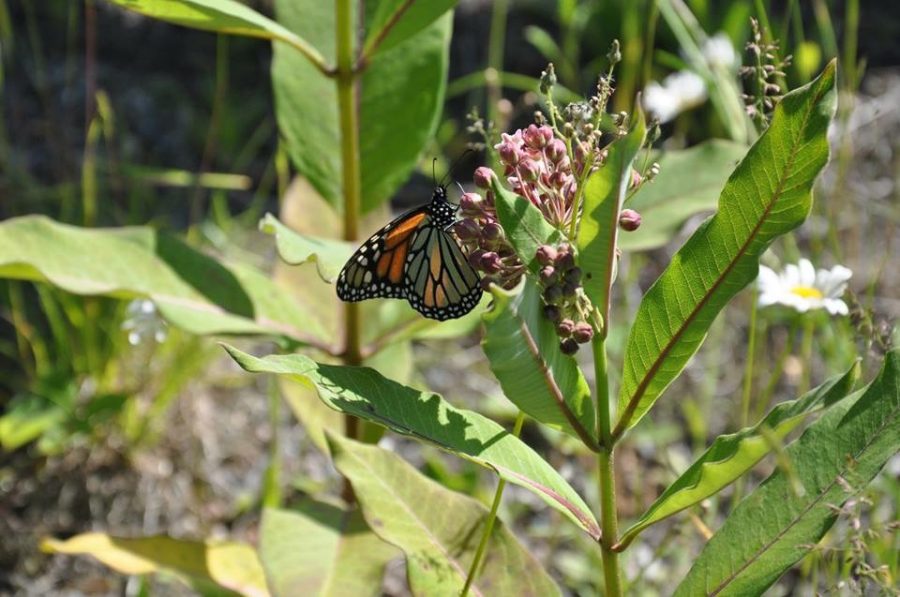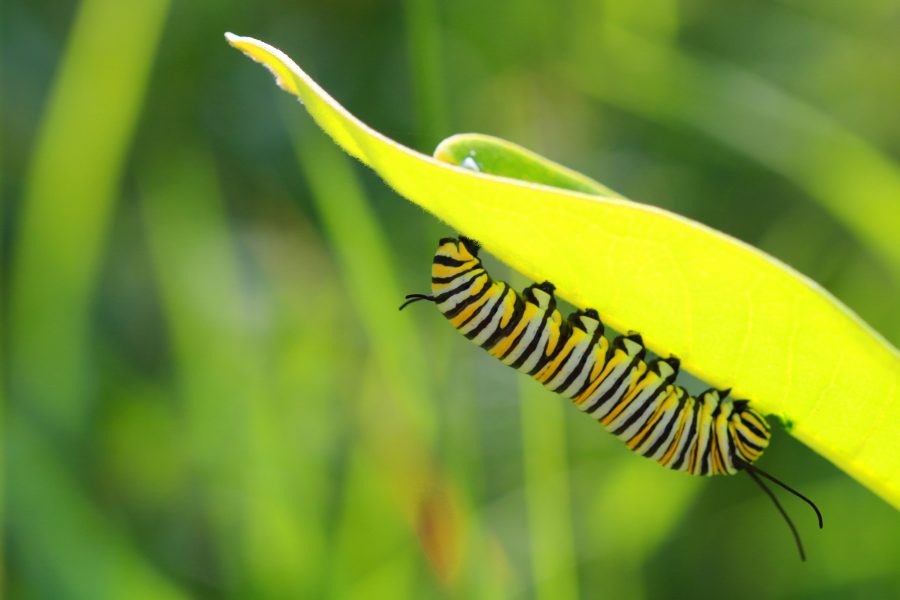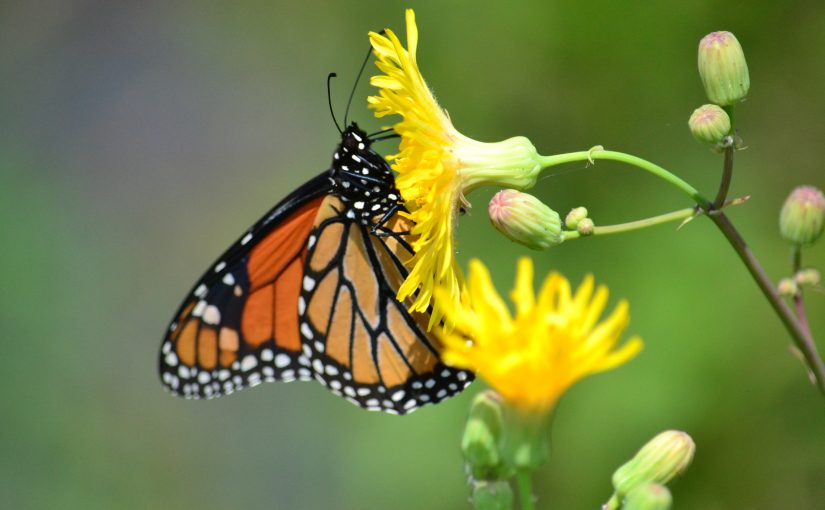Today’s post was written by summer student Danielle Bullen from Rondeau Provincial Park.
It’s that time of year again, and across Ontario, we’re starting to see those beautiful orange and black wings.
Monarch Butterflies come all the way from Mexico over a few generations, depending on the amount of milkweed available during their travels, spending summer here in Ontario.
From egg to chrysalis
Monarch females (the ones without dark spots on their wings) lay, on average, 700 eggs over two to five weeks in August. These eggs are about the size of a pinhead!

Monarchs lay their eggs on Common Milkweed plants, usually on the underside of the leaves. They tend to only lay one egg on a single milkweed. After about four days, the monarch caterpillars hatch from their eggs.
Throughout their 10-14 days as larvae, these caterpillars grow to 3,000 times their weight and shed their skin five times. Funnily enough, their skin is part of the food that makes them multiply in weight.

Before monarch caterpillars pupate, they spin a silk mat and hang upside down by their last set of legs in the shape of the letter J. They do not, however, spin a silk covering around their pupa – which means it is not called a cocoon but rather a chrysalis.
Monarchs develop in their pupa stage for about 10-14 days depending on weather conditions. Near the end of a monarch’s pupa stage, the chrysalis changes from a bright green to a clear colour through which the orange and black of the adult monarch’s wings can be seen.
Once the adult butterfly “hatches” from its chrysalis, it pumps fluid into its wings and in a few short hours, it’s ready to take flight!
The journey
The adult monarchs that hatch in late August in Ontario have a huge job ahead of them. Because they cannot survive a Canadian winter, they must fly 3,000 km to central Mexico for the cold season. These monarchs live up to nine months, which is much longer than the ones earlier in the summer.

Here in Rondeau, we tag migratory monarchs through Monarch Watch. The butterfly tag is about the size of an eraser on the end of a pencil. It is placed on the outside of the monarch’s wing on the “mitten-shaped” cell. The tag contains a number that can be called if the monarch is retrieved in Mexico.
